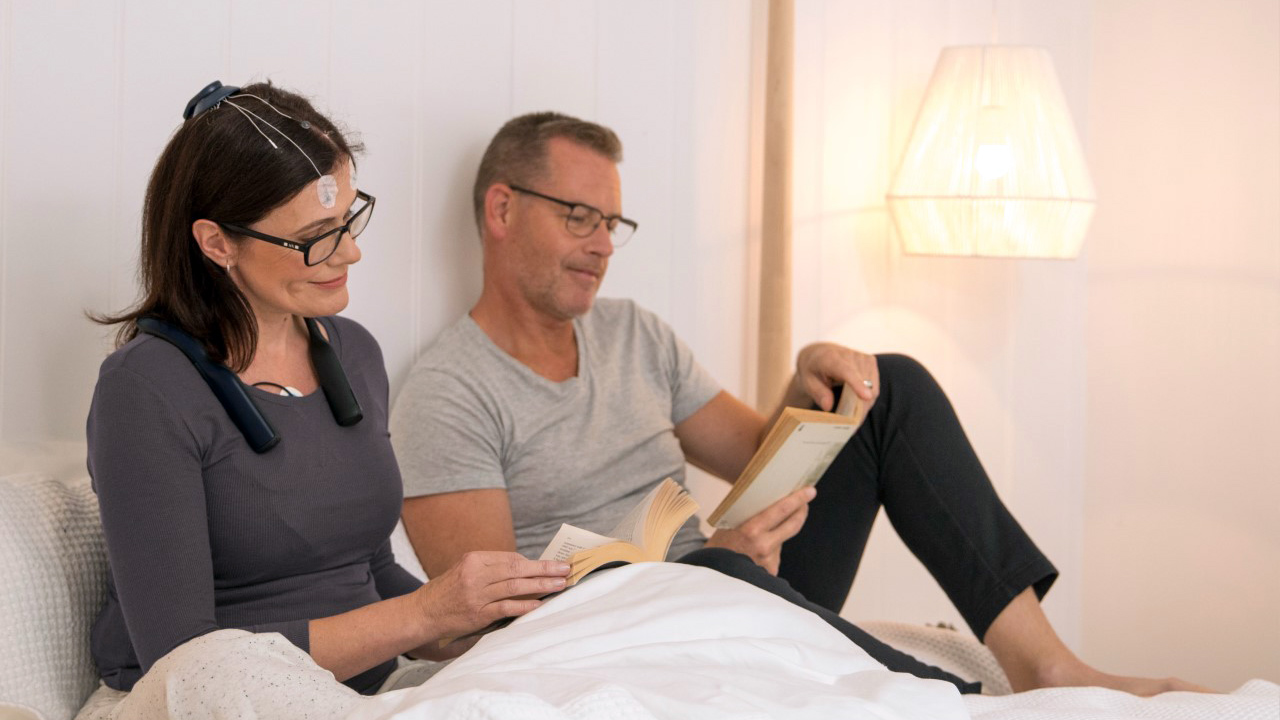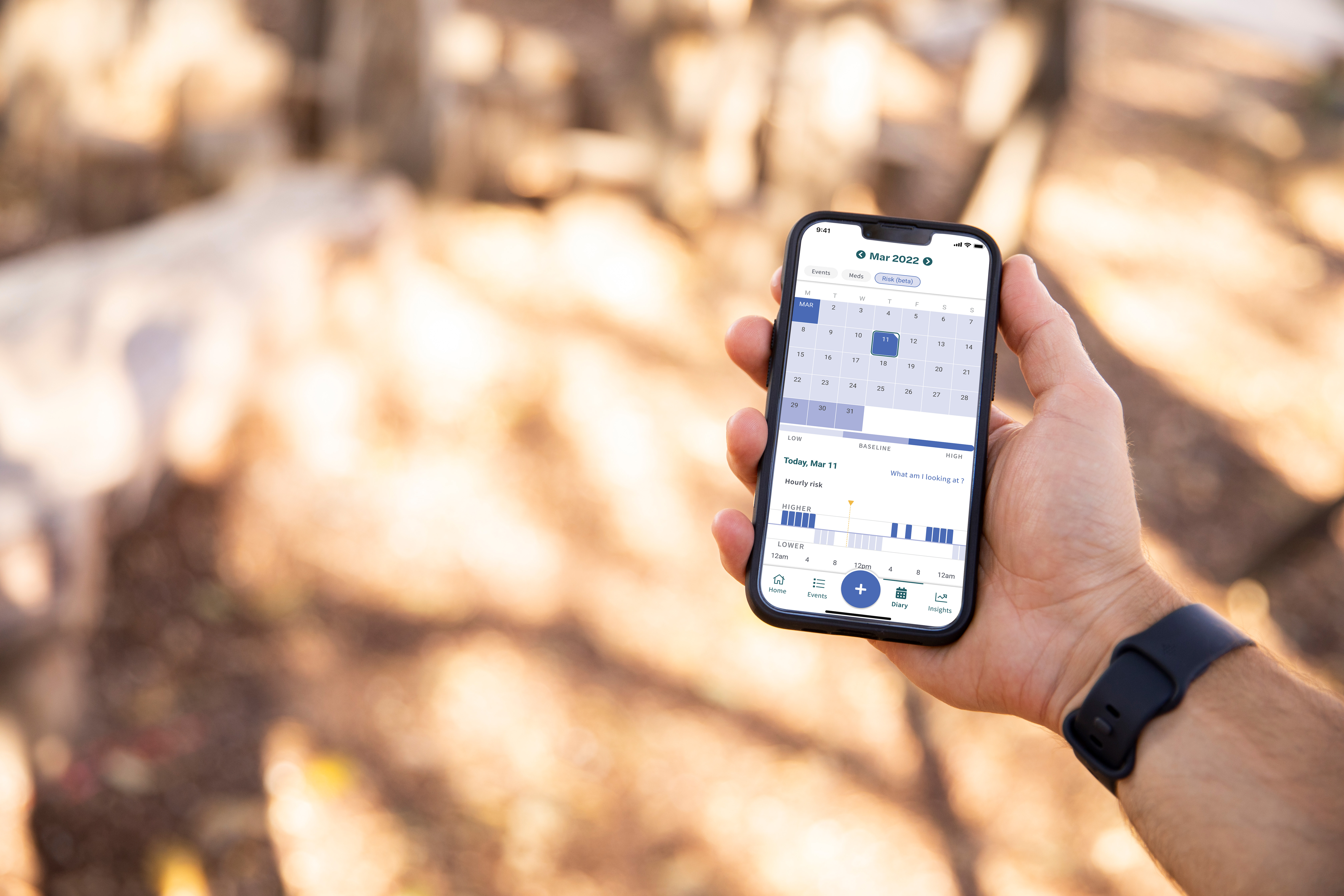4 Minute read
A portable system for diagnosing epilepsy is now available across Australia and internationally. A companion app allows people with epilepsy to ‘forecast’ their seizure risk. The system was developed by Seer Medical, which has raised $A80 million in investment.
Key points
- Methods for diagnosing epilepsy are currently inadequate, even though the condition affects around 65 million people worldwide
- A portable system for improved epilepsy diagnosis is now available across Australia, with market entry underway across the UK, the US, and Germany
- In a world first, a companion app gives people with epilepsy more control over their lives by providing personalised insights into their periods of high seizure risk
- The system was developed by Seer Medical, a company co-founded by University of Melbourne researchers.
The outcome
More than 15,000 people across Australia have used Seer’s at-home system for improved epilepsy diagnosis. The system, which combines a wearable device and cloud-computing technology, has improved access to in-demand monitoring, shortening patient wait time from 6-18 months to 6-8 weeks.
The technology is also being introduced to healthcare systems across the UK, US, and Germany, after Seer obtained Conformité Européenne approval (in compliance with European health, safety and environmental protection standards) and regulatory clearance from the US Food and Drug Administration.
An app that is available free of charge to the public uses previously recorded events to help people understand their personalised patterns of seizure activity – indicating when people with epilepsy are more or less likely to have a seizure.
The system was developed by Seer Medical, a company founded in 2017 by researchers at the University of Melbourne. The company now hosts the world’s largest curated epilepsy data library.
Seer Medical has raised over $A80 million from investors, including medical device company Cochlear Ltd, Breakthrough Victoria and Mayo Clinic.
Seer Medical has more than 200 employees globally.
The need
Methods for diagnosing epilepsy are currently inadequate, even though the disorder affects around 65 million people worldwide.
“Epileptic seizures can be infrequent and unexpected. Sometimes, people with epilepsy don’t remember that they’ve had a seizure. And heart problems, narcolepsy or migraines can cause similar symptoms and be confused for epilepsy,” says Professor Mark Cook.
“For an accurate diagnosis, a person’s brain activity, heart activity and behaviour need to be monitored continuously over several days,” Professor Cook says.
However, monitoring patients for long durations in hospital is expensive, and the equipment is not available in most hospitals. In-hospital monitoring is also inconvenient for patients. It is also not available in regional and rural areas.
The research
The technology behind Seer Medical’s portable diagnostic system is based on clinical observations and research led by University of Melbourne researchers. Professor Mark Cook is a University of Melbourne Professor in Biomedical Engineering. He is also Chair of Medicine and Director of Clinical Neurosciences at St Vincent’s Hospital Melbourne. Dr Dean Freestone is an electronic engineer.
Because of the nature of epileptic seizures, the development and testing of machine-learning algorithms for seizure detection require data from the same patients collected over years.
The research team conducted a clinical trial in partnership with Neurovista, a medical device company based in Seattle, USA. In the 2010 trial, 15 people were implanted with a seizure-detection device and monitored for up to three years.

“Analysis of the clinical trial data revealed seizure cycles – an increased likelihood that a person would experience a seizure at a particular time of day, week or month. It also showed that seizure duration and frequency are highly predictable within individuals with epilepsy but vary between them,” says Professor Cook.
The team confirmed these findings using Seizure Tracker, a website and app that has collected information on epileptic seizures from more than 10,000 people for up to 10 years.
Based on this work, the team developed machine-learning algorithms using data acquired from scalp monitoring studies performed in hospital patients over many years of clinical practice.
In 2015, Professor Cook won Epilepsy Foundation of America’s Shark Tank Competition, receiving $US125,000 to pursue methods for epilepsy diagnosis and management.
Technology development history
In 2017, Professor Cook and Dr Freestone co-founded Seer Medical with longtime friend Georgina Kenley, alongside a number of colleagues from the University of Melbourne and St Vincent’s Hospital Melbourne. Professor Cook is Chief Medical Officer and Dr Freestone is Chief Executive Officer of the company. The company has attracted investment of more than $A80 million from Cochlear Ltd, the Epilepsy Foundation and private investors.
Seer Medical developed a portable diagnostic system that can be used at home to monitor brain activity and behaviour for up to 10 days.
“The system uses electroencephalography (EEG) to measure brain activity via electrodes on the scalp. It also uses electrocardiography (ECG) to measure heart activity via electrodes on the chest. A wearable harness holds the data recorder and a battery pack,” Professor Cook says.
A portable video camera is also supplied, so patients can film their own behaviour wherever they go. Patients are connected to and disconnected from the system in one of Seer Medical’s more than 20 clinics around Australia.
During monitoring, data is uploaded wirelessly to the Seer Cloud, the company’s secure cloud storage. The data is analysed using Seer Medical’s machine-learning algorithms, which it continues to develop. The output from the monitoring can then be shared with the patient’s doctor.

The company also developed the Seer app, which allows anyone with epilepsy to record their own seizures, schedule medication, and share this information with their healthcare provider.
Seer Medical’s world-first non-invasive seizure risk forecasting technology was unveiled in 2022, available for users of the Seer app. The technology was developed in collaboration with experts from the Mayo Clinic and King’s College London through the ‘My Seizure Gauge’ project. Seer Medical received $US3 million from the Epilepsy Foundation of America for the project.
The company received Food and Drug Administration (FDA) clearance to offer its home-based long-term monitoring to patients across America in 2022. Seer Medical joined the inaugural cohort of the Mayo Clinic Platform Accelerate program for health tech startups to undertake market validation and clinical readiness activities.
Seer Medical has signed a strategic collaboration to accelerate ultra-long term EEG monitoring with Epiminder, a Melbourne company that is developing an implantable device for seizure detection. Epiminder was also co-founded by Professor Cook.
Seer Medical has more than 200 employees across Australia, the UK, the US, and Germany.
Funding
ARC Linkage Project (LP0560684)
ARC Linkage Project (LP100200571)
ARC Industrial Transformation Training Centres (IC170100030)
NHMRC Project Grant (1065638)
Mayo Clinic
EWM Group
SG Hiscock
Giant Leap
Epilepsy Foundation (Australia)
Epilepsy Foundation of America
BioMedTech Horizons (Medical Research Future Fund)
Awards
Professor Mark Cook was named an Officer of the Order of Australia in 2023 for his service to neurological medicine and research and contribution to the treatment of epilepsy.
Finalist in 2022 UCSF Digital Health Awards
Seer Medical Data Scientist Dr Pip Karoly received the 2022 Prime Minister’s Science Prize for New Innovators for her work in seizure forecasting.
Seer was named ‘Startup of the Year’ in the Governor of Victoria Startup Awards in 2022.
2021 Most Outstanding Patient Innovation award granted by Australian Patients Association
Publications
Karoly PJ et al (2021) Cycles in epilepsy. Nature Reviews Neurology 17: 267-284 doi: 10.1038/s41582-021-00464-1
Karoly PJ et al (2020) Forecasting cycles of seizure likelihood. Epilepsia 61(4): 776–786. doi: 10.1111/epi.16485
Clarke S et al (2019) Computer-assisted EEG diagnostic review for idiopathic generalized epilepsy. Epilepsy & Behaviour, doi: 10.1016/j.yebeh.2019.106556
Cook MJ et al (2013) Prediction of seizure likelihood with a long-term, implanted seizure advisory system in patients with drug-resistant epilepsy: a first-in-man study. Lancet Neurology 12: 563–571. doi: 10.1016/S1474-4422(13)70075-9
Patents
AU2020901338, filed 28 April 2020
AU2020202572, filed 16 April 2020
US10506988B2, filed 11 February 2019
WO2019100102A1, filed 26 November 2018
AU2018305723, filed 8 June 2018
People
Images: Seer Medical
-
Australian Epilepsy Project
The Australian Epilepsy Project is competing for Medical Research Future Fund support to improve epilepsy diagnosis throughout Australia.
-
Predicting epileptic seizures, just like the weather
A new tool can predict the likelihood of epileptic seizures, paving the way for a forecasting app that could be used every day.
-
‘Epilepsy seizures’ – The Lancet Neurology podcast
Listen to Professor Mark Cook talk about epilepsy seizure detection and prediction.
-
Reading the body’s electrical signals to treat illness
Researchers are now seeking to record and interpret our own electrical signals to predict symptoms.
Banner image: Using machine-learning algorithms, Seer Medical’s diagnostic system analyses electroencephalography (EEG) data to detect epileptic seizures – highlighted here in pink.
First published on 15 June 2023.
Share this article
Case studyHealth and wellbeingFaculty of Engineering and Information Technology
Keep reading
-
Why partner with us
Partner with the University of Melbourne. Join a community where the world’s best minds help solve the biggest global challenges of our time.
-
Collaborate with us
Explore some of the many ways you can partner with us to help your organisation excel.
-
Seer Medical to take at-home epilepsy testing service global
An at-home technology helping reduce epilepsy diagnosis wait times and making diagnosis accessible to remote areas, is launching in Europe, with University of Melbourne investment.
-
From a PhD to a mobile app that helps predict seizures
Dr Pip Karoly is working on a seizure forecasting app for epilepsy sufferers – something she'd outlined in her PhD.